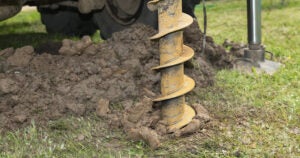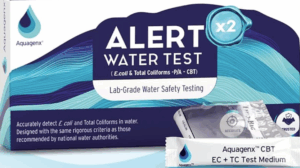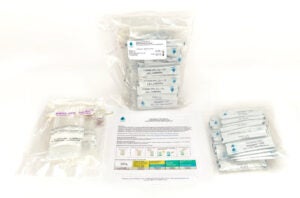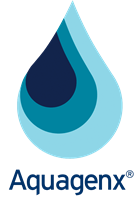Difference Between Water Quantity and Quality
When most Americans think about drinking water challenges, our minds typically travel overseas, particularly to low- and middle-income countries. We might picture women and girls having to walk for miles in remote areas while carrying vessels just to collect daily water for their families. We might think of severe draughts in poor regions. We might read news stories about people dying from drinking contaminated water.
The USA is not immune to water challenges. They are not as severe and widespread across the entire USA as other countries’ water challenges, but challenges are present. To truly understand and prevent water challenges, it is important to know the difference between water quantity and water quality. This is also true for private well owners.
Water Quantity
 Water quantity is the amount of water available or accessible in a specific area or region. It is measured by volume (total yield) and flow rate over a specified period of time. Access to sufficient water quantity for water availability and usage is crucial for a variety of purposes. These activities include drinking, washing, good hygiene, cooking, and recreational, agricultural and industrial activities. Sufficient water quantity is also vital for land ecosystems and aquatic ecosystems.
Water quantity is the amount of water available or accessible in a specific area or region. It is measured by volume (total yield) and flow rate over a specified period of time. Access to sufficient water quantity for water availability and usage is crucial for a variety of purposes. These activities include drinking, washing, good hygiene, cooking, and recreational, agricultural and industrial activities. Sufficient water quantity is also vital for land ecosystems and aquatic ecosystems.
Well drillers assess water availability and water quantity – the total yield of water – as part of the process to determine the best location of a private well. This is not a casual, hit or miss operation. In choosing a well site, well drillers use various methods to ensure the well yields sufficient water quantity that meets the needs of the household or community.
The availability of groundwater depends on the type of geological (rocks and physical processes of the earth) formations in your area. To understand the relationship between groundwater, wells and aquifiers (large bodies and swaths beneath earth’s surface where groundwater is located), read about the relationship between groundwater and aquifers.
To determine the quantity and depth of water, well drillers conduct hydrogeological surveys that examine the presence of water-bearing aquifers and study groundwater flow, geological formations, topology and the local hydrological cycle (study o water on earth). They also conduct geophysical surveys that measure the physical properties of the ground, such as electrical conductivity or seismic waves. Well drillers also might collect information about other private wells in the area to assess local water quantity, depth, and quality. They might also employ advanced technologies such as satellite imagery and remote sensing. These technologies provide more information about land surface, vegetation patterns, and moisture content in the soil to help inform water availability and quantity.
Water Quality
Water quality (characteristics of a water sample that determine how safe it is) assessments by well drillers are also found in some of the above methods. Water quality testing by well drillers ensures the groundwater is safe to drink. Sometimes well drillers dig test wells, which are small, temporary wells, to collect more information about water quality and quantity. Once drilling of the actual well begins, well drillers collect water samples from different depths to analyze them for biological, chemical and physical properties.
Although well drillers conduct water quality testing before a well is dug and during the drilling process, iit is the responsibility of well owners to follow up with regular water quality testing. Private wells are not regulated by local government health agencies. Wells owners must ensure safe well water free from contamination for themselves and their families.
Key Terms
Water Quantity: total yield of water, availability of water
Water Quality: characteristics of a water sample that determine how safe it is
Geological: related to the study of rocks and physical processes of the earth to understand its origin and history
Hydrological: relating to the study of water on the earth
Hydrogeological: related to the branch of geology concerned with water occurring underground or on the surface of the earth
Aquifer: large bodies and swaths of porous and permeable material where groundwater is present and fills all the pore space
Aquagenx Well Water Test Kits
Buy on Amazon & Walmart
Buy kits that contain 2, 5, or 10 tests

Buy In Bulk from Aquagenx
Buy kits that contain 25, 50 or 100 tests

